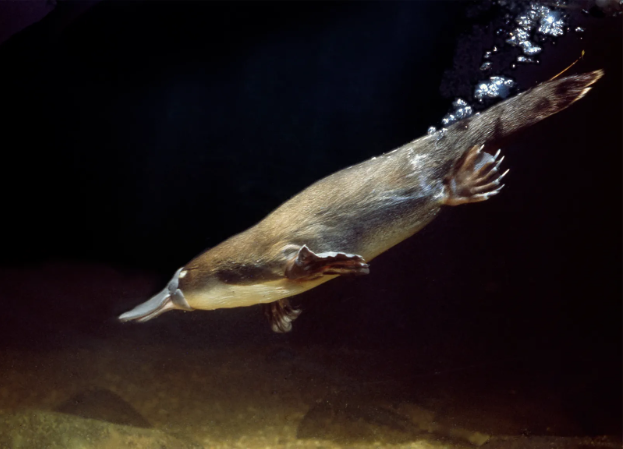Creature Feature: Platypus
January 12, 2023
- Platypuses don’t have teeth, they mash their food (typically bugs and small crustaceans) with gravel they scoop up with them on the riverbed.
- Platypuses and 4 species of echidnas make up the entirety of living monotremes, or egg-laying mammals, as opposed to the placentals and marsupials that are all other mammals.
- They close their eyes, nose, and ears while hunting underwater, instead using specialized receptors in their bill that detect the electric pulses of their preys’ movements.
- A platypus can stay underwater for a minute or two before needing to resurface.
- Males have venomous spurs on their hind legs, used for fighting off predators or disputes with other platypuses. It is potent enough to kill small animals and cause intense pain in a human.
- They are most active from dusk to dawn, sheltering in their burrows during the day. The entrances to said burrows are just large enough for them to fit through, and squeezes excess water from their fur.
- The ear and eye on each side is housed in the same little groove.
- Their fur is dense and waterproof (which led to them being hunted for furs in the past).
- They are a protected species.
- They are solitary creatures, typically avoiding other platypuses unless mating.
- The platypus doesn’t have nipples, and instead the mammary glands secrete through the skin.
- Hatchlings have vestigial egg teeth that help them hatch from their reptilian ancestors, but it later falls out.
- For a small mammal they live quite long, some recorded specimens living longer than 20 years in the wild.
- Scientists originally thought they were looking at a hoax, an otter with a duck’s bill and a beaver’s tail sewn on. Instead it was just the platypus.
- They are from Australia.
Sources:
https://www.nationalgeographic.com/animals/mammals/facts/platypus
